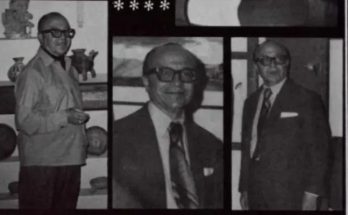By Luis Felipe Rodriguez
The historic center of San Miguel de Allende was classified as a Zone of Historic Monuments in 1982. It became a UNESCO Heritage site. According to Dr. Francisco López Morales: “The study that founded the file for the application of the Protective Village of San Miguel el Grande, and the Santuario de Jesús Nazareno de Atotonilco, to be included in the World Heritage addressed an exhaustive, thorough, and rigorous review of this historical complex, based in documentary sources of local, regional, and national historical archives of Mexico and Spain. The research addressed precisely the specificity and original character of San Miguel el Grande as a protective village of the Camino Real de Tierra Adentro (The Royal Inland Road), one of the first cultural itineraries opened by the Spaniards in the interior of the American continent, and as an average city located in the Mexican Bajío.”
San Miguel is representative of territorial and urban development in New Spain. It is related to the protection of one of the most important royal trade routes in the New World, which linked the rich silver mines of Guanajuato and Zacatecas with Mexico City. The city prospered in the eighteenth century with the construction of notable religious and civil buildings.
The city of San Miguel and the Sanctuary of Atotonilco are intimately related. Both played an important role during the fight for independence from Spain. Beginning in 1521, the Spanish established a network of roads that linked the different regions of the land which they called the Viceroyalty of New Spain. It was called the Royal Inland Road and it had a major economic importance, because it led from the southern mines all the way to Mexico City, then northward to the southern United States. It linked the most important cities to the mining centers with the highest production. Along this Royal Road, cities were founded as potential centers of defense and colonization of the territory.
In 1542, the Franciscan friar Juan de San Miguel founded the indigenous town of San Miguel. In 1555, it became a Spanish town by decree from the viceroy and became known as San Miguel el Grande. The location—where the city is to this day—was chosen because of altitude which afforded visibility, and a good supply of water. El Bajío, the lowlands, are the wide plains which have some of the richest and most fertile soil in the country, good natural resources, and a mild climate. All these conditions favored the development of mining, poultry, livestock, commercial, and industrial activities during the first years of colonization. The Bajío region acted as a magnet encouraging the exchange of races and cultures, and became the first and largest capitalist entity in New Spain.
In the eighteenth century, the Viceroyalty of New Spain experienced an economic boom. This was not only because of mining wealth but due to demographic growth. The urbanization of cities in the Bajío region was a phenomenon that did not take place in other regions of New Spain. The city of San Miguel was part of this growth and urbanization during that time.
At the beginning of the nineteenth century, San Miguel played an important role in the war of Independence. One of the main protagonists was Ignacio de Allende, a native son, whose name the city took as part of its identity. Throughout the nineteenth century new buildings and green spaces were built, reflecting an evolution of tastes in architecture and landscape. Some of those included the Ángela Peralta Theater, and the Benito Juárez Park.





